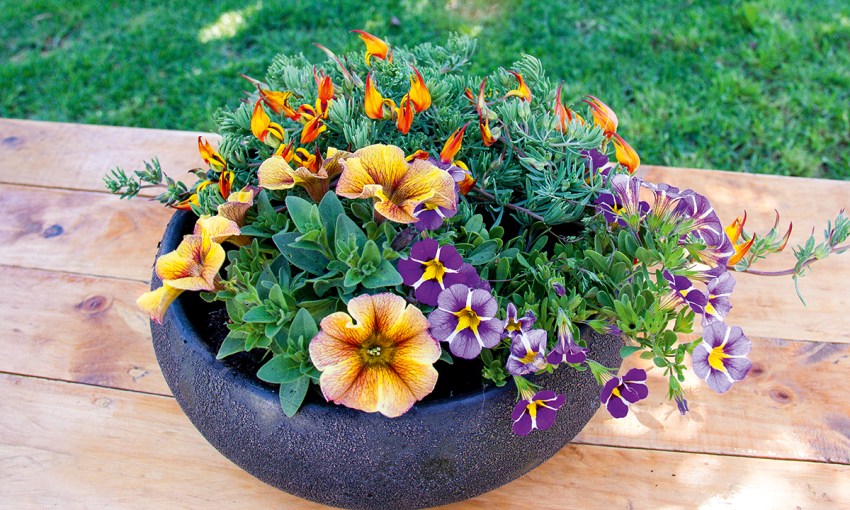Creating a colourful planter or living table centrepiece can be an easy and effective way to add personality to your entertaining area this party season.
In the garden: How to make a living floral centrepiece
Planting your own pots or bowls is a creative way to decorate your entertaining space, or make personalised gifts for friends.
The first thing you’ll need is a wonderful pot. Choose one that suits your space and your taste, but normally a low bowl or even a hanging basket with the hook taken off works best for tables. You could choose to have a window box along the top of your retaining wall or a group of different size pots in the corner of your patio area.
The choice of shapes, sizes, colours and textures is immense and you can tailor it to suit your personal style. Make sure you get one big enough for the amount of plants you want – three plants sit well in a pot 25cm in diameter, or five plants sit well in a 35cm pot.
Now that you have a pot, it’s time to think about your plant selection. There is a huge range of compact, hardy plants to choose from, that offer a wonderful array of flower colours and foliage shapes.
Which ones look the best together? Fortunately, the floral trade is leading the way when it comes to smashing the rules and allowing your creative side to shine.
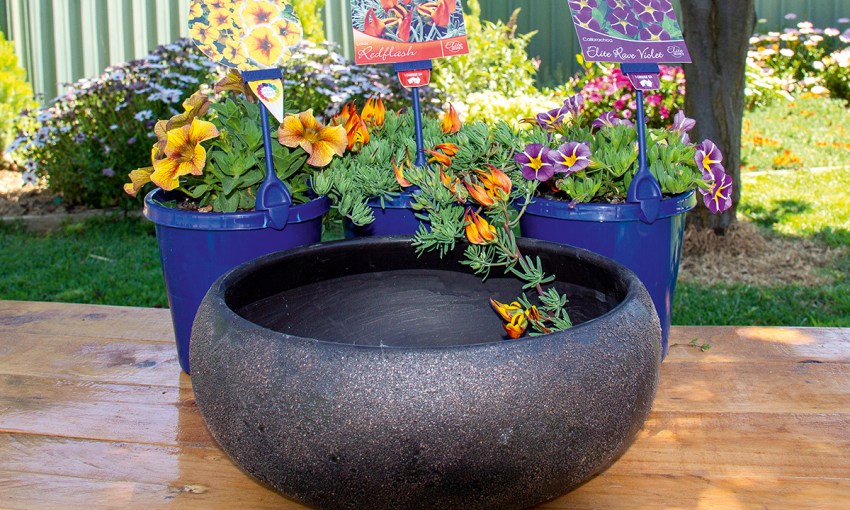
Of course, some plants grow better together than others but you can allow your imagination to thrive. Mixing foliage colours provides contrast and mixing heights creates depth, but it’s the flowers that really steal the show and can make all the difference.
Select colour tones that will complement your pot and patio area. Some of the best species for common use are:
Indoors you want foliage with contrast: parlour palm, calathea, peperomia, aspidistras and maidenhair fern
On patios, you can use a mix of height, foliage and flowers: carnations, gardenias, bacopas, lotus, dahlias, calathea and fuchsias
For a table centrepiece, low, compact groundcovers are the way to go: bacopa, lotus, peperomia, supercals and calibrachoa
Pots made for gifts are best with lots of flowers: geraniums, supercals, bidens, dahlias, begonias, carnations and fuchsias
For window boxes, you want low compact plants: bidens, nemesia, calibrachoa and arenaria
Hanging baskets are for cascading flowers: ivy leaf geraniums, calibrachoa, bacopa, nemesia, supercals, fuchsias, begonias, snapdragons, lobularia and petunias
For entrance planters you want good fragrance and striking foliage: lavender, cordyline and standard bay trees with flowers such as nemesia underneath all work great
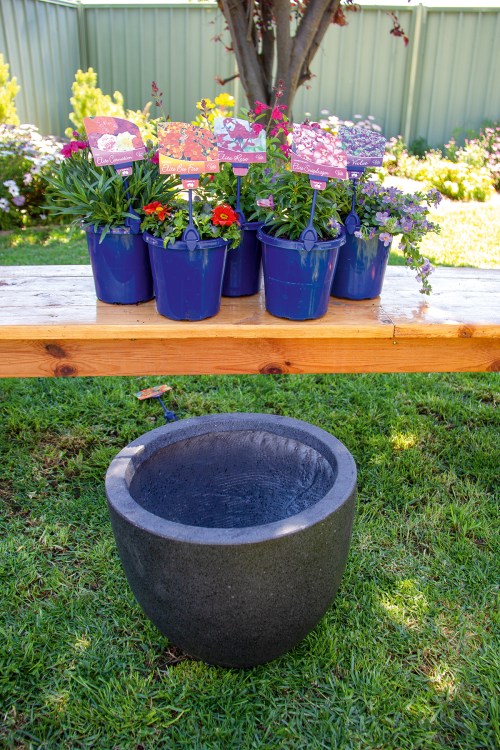
It’s always best to give your plants the best start possible by using a good quality potting mix. Premium mixes will have a neutral pH, with long term, slow-release fertiliser and wetting agent too. Never use soil from the garden as this will block drainage and create problems for your plants.
Once you have chosen your pot, plants and potting mix at your local garden centre, be sure to go home and water the plants before starting. Put some potting mix in the bottom of the pot first and before taking your first plant out, arrange them in the pot and make sure you’re happy with how it looks.
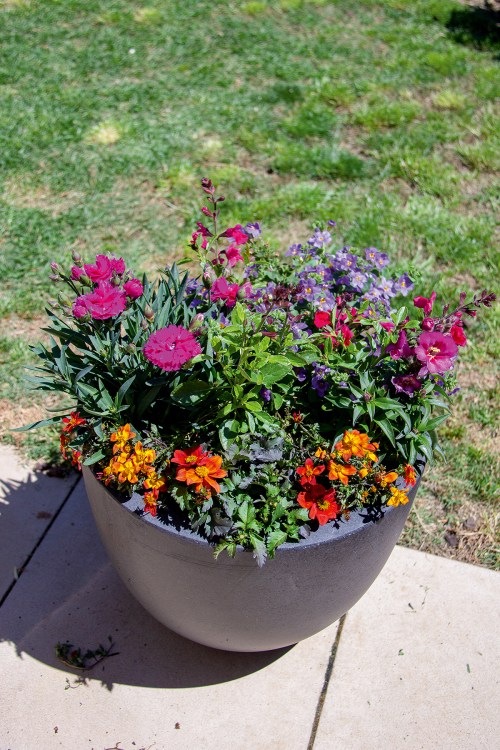
Now, remove the plants from their plastic pots and place in the new decorative pot, loosening the soil around the roots. Once the plants are all in together, you can back-fill around the roots with potting mix and give your plants a really good water. Watering well ensures the potting mix fills any gaps around the plants’ roots and settles them in.
It is also beneficial to give your new planter some diluted Seasol as this promotes root growth and foliage growth. If this planter is for your home, I would give any flowers a tip prune straight away to promote new growth and flowering. However, if it’s for a gift, leave them alone so the recipient can enjoy their beauty straight away.
Congratulations, you now have a beautiful living art piece and with correct maintenance it will give you joy for up to nine months, or even more.
When the old flowers die, remove them straight away to encourage new foliage and flowers. Give your pot a good soaking with water once or twice a week depending on temperature and position. Fertilise with an organic liquid fertiliser and Seasol each month.
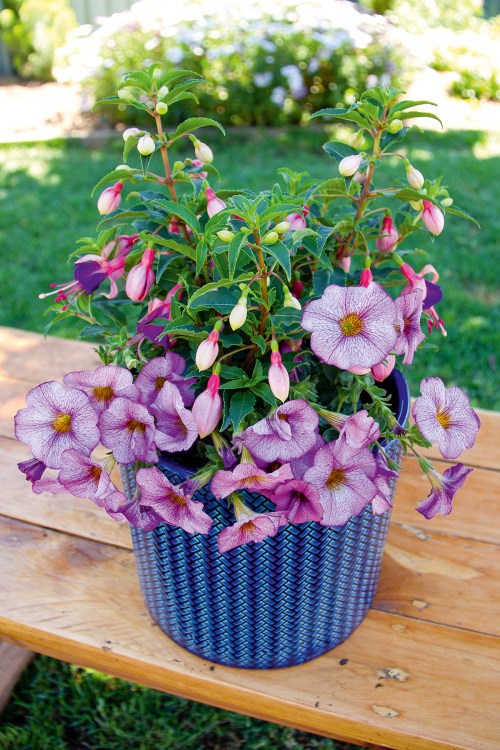
This article first appeared in the Summer 2019 issue of SALIFE Gardens & Outdoor Living magazine.



